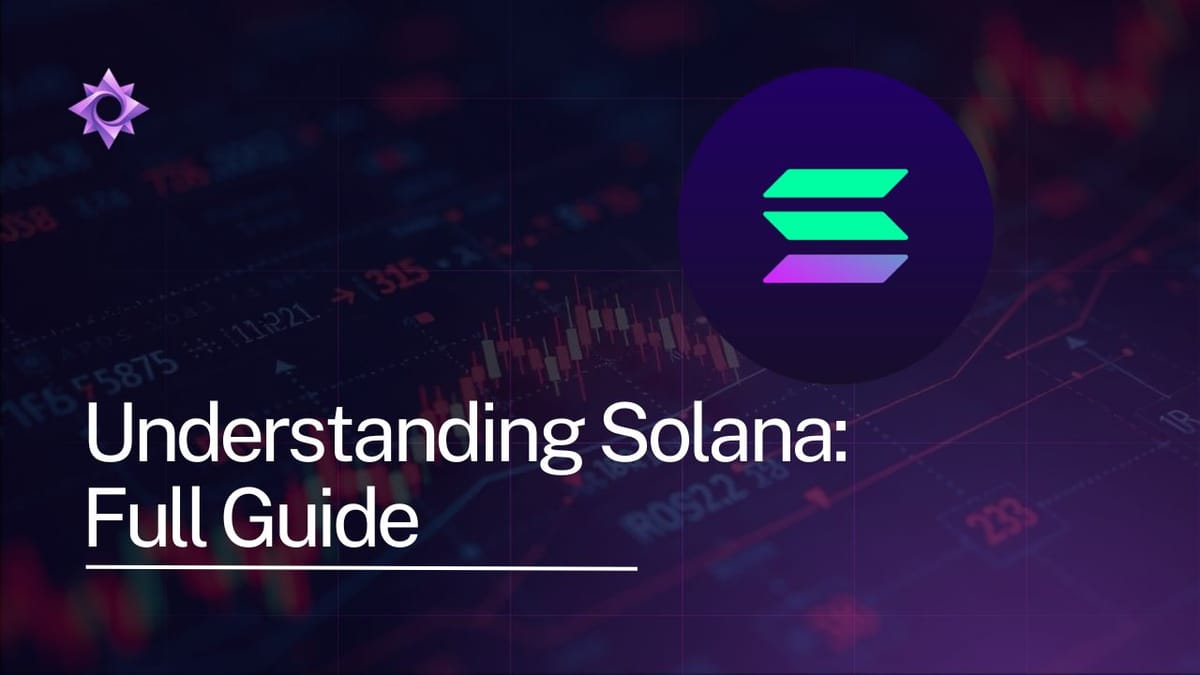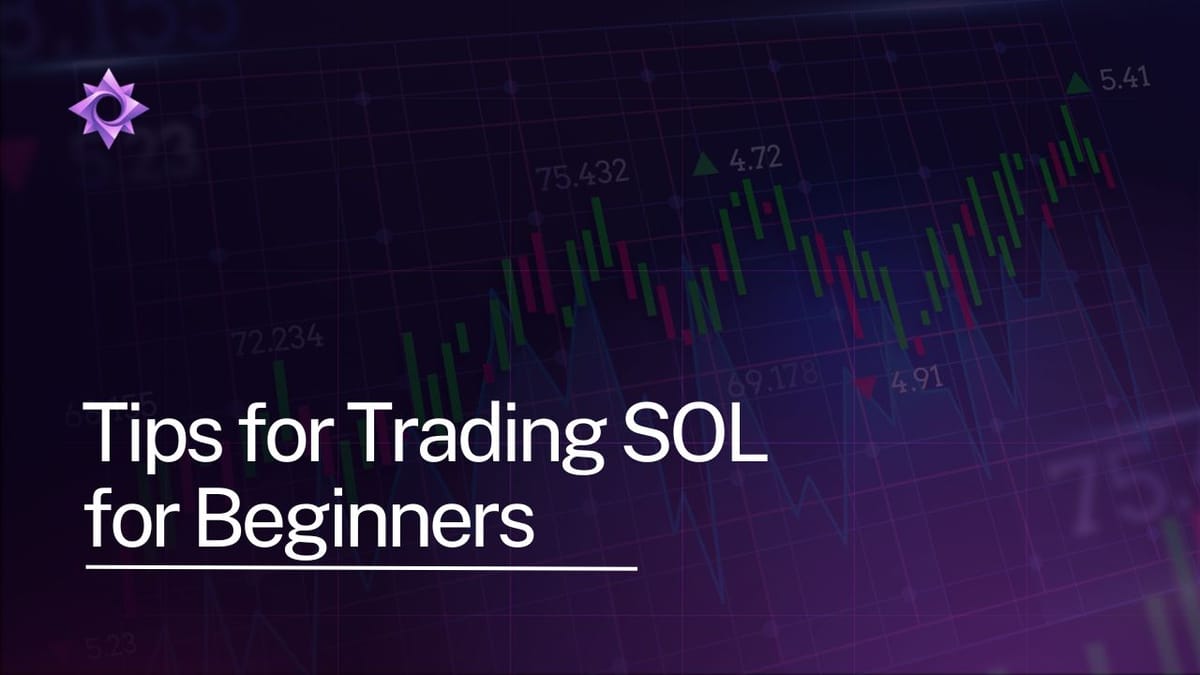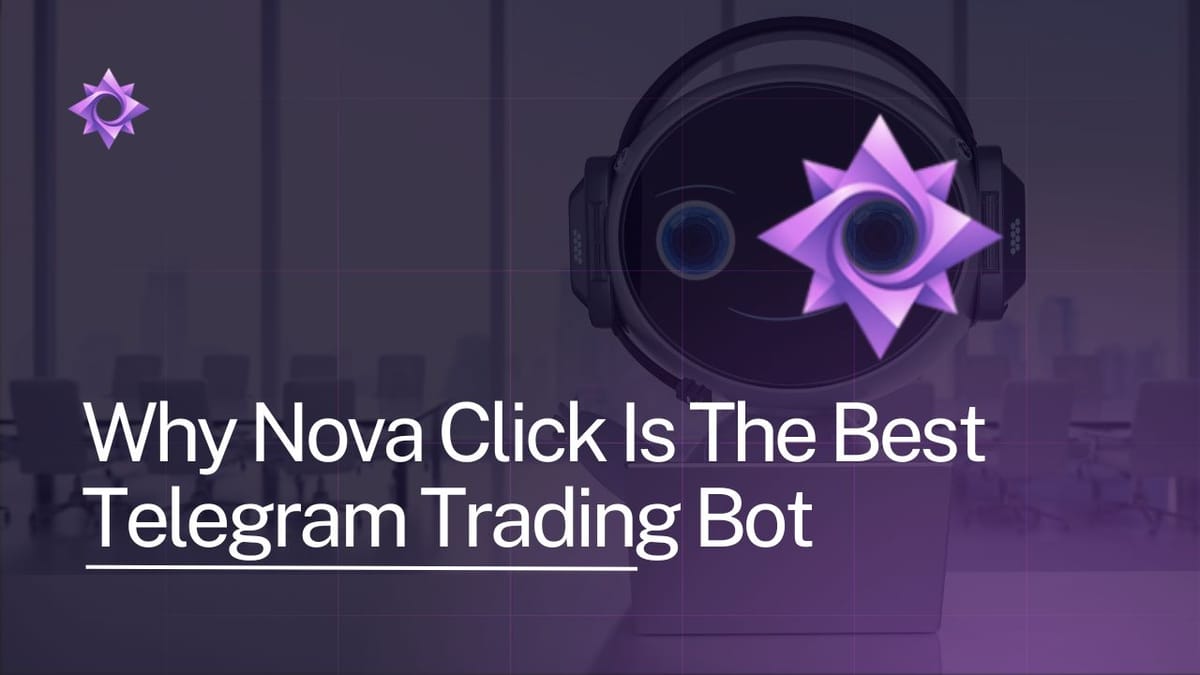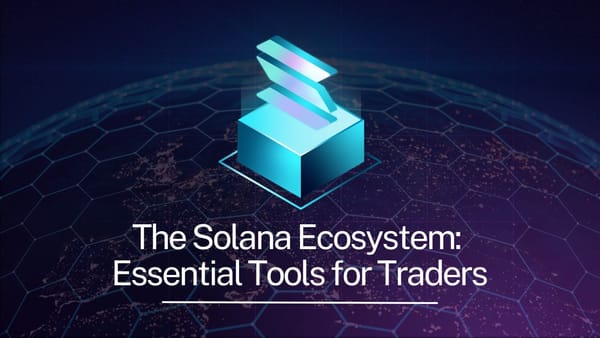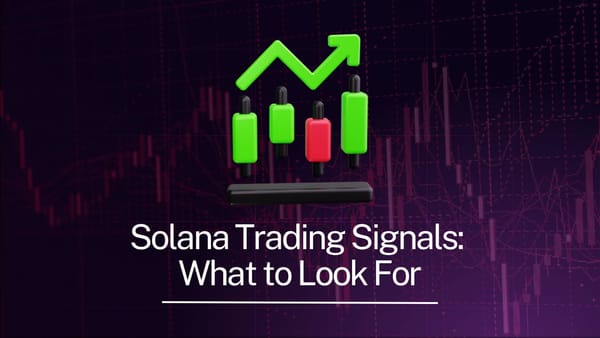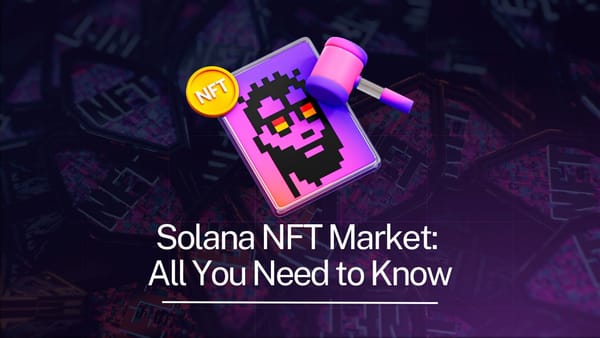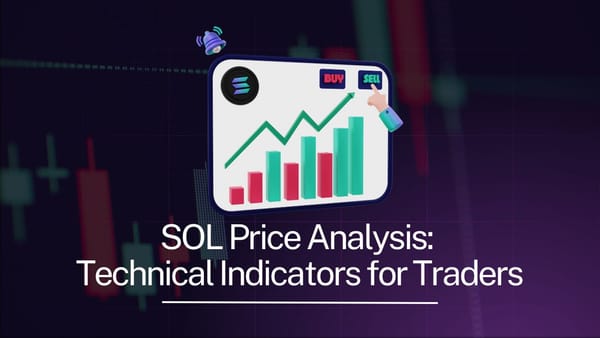Solana Crypto: What Is SOL and How It Works?
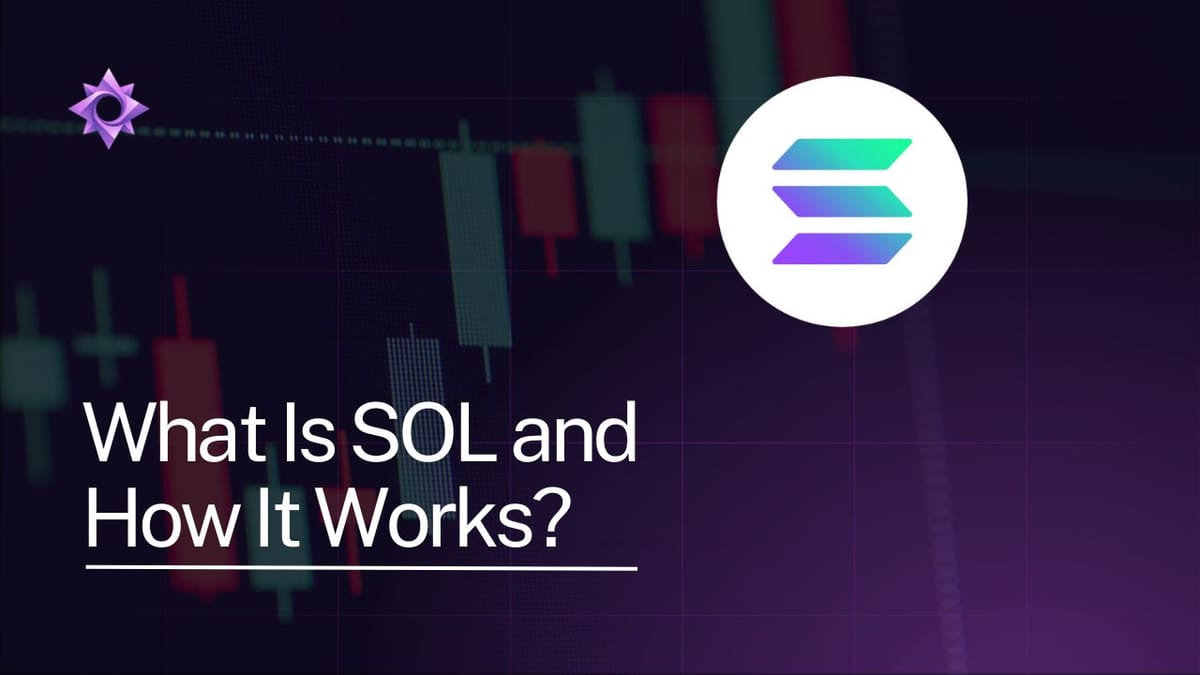
So, you've probably heard a lot about Solana (SOL) lately, especially if you're into crypto. It's been making waves, and for good reason. People are talking about its speed and how it's changing things in the world of digital money. This article will break down what Solana is all about, how it actually works, and why it's become such a big deal. We'll also touch on solana crypto trading, so you can get a better idea of what's going on.
Key Takeaways
- Solana is a blockchain platform that focuses on fast transaction speeds and low costs.
- It uses a unique combination of technologies, like Proof of History, to achieve high performance.
- The SOL token is used for paying fees and for helping secure the network through staking.
- Solana's design helps it handle a lot of activity, making it good for various decentralized apps.
- The Solana ecosystem is growing, with many projects in decentralized finance (DeFi) and NFTs.
Understanding Solana's Core Identity
What Defines Solana (SOL)?
Solana is a blockchain platform designed for high-speed and scalable decentralized applications. It stands out due to its ability to handle a large number of transactions per second (TPS) while maintaining low transaction fees. This makes it a strong competitor to other blockchains like Ethereum.
- High transaction throughput.
- Low transaction costs.
- Scalability for dApps.
Solana uses a combination of Proof of History (PoH) and Proof of Stake (PoS) consensus mechanisms. This hybrid approach helps ensure both security and efficiency.
The Genesis of Solana's Vision
The idea for Solana came from Anatoly Yakovenko, a former engineer at Qualcomm, back in 2017. He wanted to solve the scalability problems that were holding back blockchain technology. Yakovenko's background in distributed systems led him to develop Proof of History (PoH), a new way to timestamp transactions. This innovation was key to improving transaction speeds.
Solana's Place in the Blockchain Landscape
Solana is quickly changing the blockchain world. It's becoming a popular choice for projects that need fast and cheap transactions. Here's how it's making its mark:
- DeFi: Solana hosts a growing number of decentralized finance platforms.
- NFTs: It provides a platform for creating and trading non-fungible tokens.
- Web3: Solana supports the development of Web3 applications.
Solana's ability to process transactions in parallel, unlike Ethereum's sequential model, gives it a big advantage in network efficiency.
How Solana Processes Transactions
Solana's architecture is designed for speed and efficiency. It achieves this through a combination of innovative technologies that allow it to process a high volume of transactions quickly and at a low cost. Let's take a look at the key components that make this possible.
The Hybrid Consensus Model
Solana uses a unique hybrid consensus model that combines Proof of History (PoH) with Proof of Stake (PoS). This combination allows Solana to achieve high throughput while maintaining security and decentralization. The PoS aspect allows validators to verify transactions based on the number of tokens they hold. The PoH consensus mechanism enables the network to timestamp transactions quickly.
Proof of History Explained
Proof of History (PoH) is the real game-changer. It's like a cryptographic clock that provides a way to timestamp transactions. Instead of waiting for blocks to be confirmed, PoH creates a historical record that proves when an event occurred. This dramatically reduces the time needed to agree on the order of transactions. Anatoly Yakovenko's experience with distributed systems design at Qualcomm was instrumental in developing this innovation. He realized that a reliable clock simplifies network synchronization, leading to exponential speed increases.
Think of it like this: in traditional blockchains, everyone needs to agree on the time before processing a transaction. PoH is like having a pre-agreed, verifiable clock, so everyone knows the order of events without constant back-and-forth.
Sealevel Parallel Processing
Solana's Sealevel is another key innovation. Unlike other blockchains that process transactions sequentially, Sealevel enables parallel transaction processing. This means that multiple smart contracts can be executed simultaneously, significantly increasing network throughput. This is a big deal because it avoids bottlenecks that can slow down other blockchains. Here's a quick comparison:
- Sequential Processing: Transactions are processed one after another.
- Parallel Processing (Sealevel): Multiple transactions are processed at the same time.
- Result: Higher transaction throughput and faster processing times.
With a continuously expanding ecosystem, Solana is rapidly transforming the blockchain landscape. Solana's architecture might allow for a limit of 710,000 TPS on a standard gigabit network and up to 28.4 million TPS on a 40-gigabit network.
The Role of SOL Crypto

Functions of the SOL Token
So, what's the deal with SOL? It's not just some random crypto; it's the lifeblood of the Solana network. SOL fuels everything. Think of it as the gas in your car – without it, you're not going anywhere. It's used for paying transaction fees, participating in network governance, and securing the network through staking. Plus, Solana has a cool deflationary mechanism where a portion of the transaction fees are burned, potentially increasing the value of the remaining tokens over time. It's a pretty neat system.
SOL for Transaction Fees
One of the primary uses of SOL is to pay for transactions on the Solana blockchain. Because Solana is designed for high throughput, these fees are incredibly low compared to other blockchains. This makes it practical for everyday use cases, like sending payments or interacting with decentralized applications (dApps). Imagine paying fractions of a penny for each transaction – that's the reality with Solana. This low-cost environment is a big draw for developers and users alike. You can check the current SOL supply to get a sense of the token's economics.
Staking SOL for Network Security
Beyond just paying fees, SOL plays a vital role in securing the Solana network through staking. Users can delegate their SOL tokens to validators, who are responsible for verifying transactions and maintaining the blockchain's integrity. By staking SOL, users earn rewards in the form of additional SOL tokens. This incentivizes participation and helps to ensure that the network remains secure and decentralized. The more SOL that is staked, the more robust the network becomes. It's a win-win situation for everyone involved.
Staking SOL isn't just about earning rewards; it's about actively participating in the Solana ecosystem and contributing to its long-term health and stability. It's a way to put your tokens to work and help shape the future of the network.
Key Advantages of Solana
Solana has really made a name for itself, and a lot of that comes down to some pretty significant advantages it brings to the table. It's not just hype; there are solid reasons why people are paying attention.
Unparalleled Transaction Speed
Okay, so let's talk speed. Solana is seriously fast. We're talking thousands of transactions per second (TPS). To put that in perspective, other blockchains can't even come close. This makes a huge difference for anything from trading tokens to running complex decentralized apps. No one wants to wait around for a transaction to go through, and Solana gets that.
Cost-Effective Transactions
Another big win for Solana is the cost. Transaction fees are super low. Like, fractions of a penny low. This is a game-changer because it opens up blockchain tech to way more people. You don't have to worry about fees eating into your profits or making small transactions not worth it. It's a much more accessible system.
Scalability for Decentralized Applications
Scalability is key, especially if you're building something that you hope will get big. Solana's architecture is designed to handle a ton of activity without slowing down or getting expensive. This means developers can build decentralized applications without constantly worrying about hitting a wall. It's a platform that can grow with your project.
Solana's design tackles the blockchain trilemma head-on, aiming for decentralization, security, and scalability all at once. It's not perfect, but it's a serious contender in the blockchain space.
Solana's Expanding Ecosystem
Solana's ecosystem is really taking off, with a bunch of different projects and applications popping up. It's not just about the tech anymore; it's about what people are building on top of it. The growth is pretty impressive, and it's attracting a lot of attention from developers and users alike.
Decentralized Finance (DeFi) on Solana
Solana has become a player in the DeFi space. Several projects are building decentralized exchanges, lending platforms, and other financial tools on Solana because of its speed and low costs. Some of the projects include:
- Raydium: Functions as an automated market maker (AMM) and provides liquidity for the Serum DEX.
- Mango Markets: A platform focused on margin trading and lending.
- Orca: Known for its user-friendly interface, making it easier for people to trade and swap tokens.
DeFi on Solana is still developing, but the low transaction fees and fast speeds make it an attractive option for developers and users looking for alternatives to more congested blockchains.
Non-Fungible Tokens (NFTs) on Solana
NFTs are also finding a home on Solana. The blockchain's speed and low costs make it a good place for minting, trading, and using NFTs. Some popular NFT marketplaces on Solana include:
- Magic Eden: A popular marketplace for buying, selling, and discovering NFTs.
- Solanart: Another marketplace with a wide variety of NFT collections.
- Metaplex: A protocol that makes it easier for creators to launch their own NFT projects on Solana.
Web3 Applications and Development
Solana is also being used to build a variety of Web3 applications. These apps are taking advantage of the blockchain's capabilities to create new kinds of experiences. This includes:
- Gaming: Several blockchain games are being developed on Solana, taking advantage of the fast transaction speeds.
- Social Media: Some projects are exploring decentralized social media platforms on Solana.
- Infrastructure Tools: A growing number of tools and services are being built to support developers building on Solana.
Comparing Solana with Other Blockchains

Solana Versus Ethereum
Okay, let's get into how Solana stacks up against the big guys, especially Ethereum. Ethereum's been around longer, so it has that first-mover advantage. But Solana came onto the scene promising faster speeds and lower costs, and it's definitely shaken things up. Think of it like this: Ethereum is the established city, while Solana is the new, streamlined metropolis. Both have their strengths, but they cater to different needs and priorities.
Transaction Throughput Differences
When it comes to how many transactions a blockchain can handle, Solana really shines. Solana can process way more transactions per second (TPS) than Ethereum. We're talking thousands versus Ethereum's lower numbers. This makes a huge difference for applications that need speed, like decentralized exchanges or games. It's like comparing a single-lane road to a multi-lane highway; Solana can just move more traffic at once. Here's a quick comparison:
| Feature | Solana | Ethereum |
|---|---|---|
| TPS (Transactions Per Second) | 2,400+ | Under 15 |
| Average Cost Per Transaction | ~$0.00026 | ~$0.30 |
Cost Efficiency Comparisons
Beyond speed, Solana also wins on cost. Transaction fees on Solana are significantly lower than on Ethereum. This is a big deal for users, especially those making smaller transactions. Nobody wants to pay a huge fee just to send a few bucks. The lower fees on Solana make it more accessible for everyday use. This is especially important for decentralized applications that aim for mass adoption. It's like the difference between taking a taxi and riding a bike – one's way cheaper for short trips.
Solana's rise is largely due to its focus on speed and low costs. While Ethereum is working on upgrades to improve these areas, Solana has already made them a core part of its design. This makes it a compelling alternative for many developers and users looking for a more efficient blockchain experience. The future will show how these two giants evolve and compete in the ever-changing crypto landscape.
The Bottom Line
So, that's Solana in a nutshell. It's a pretty fast blockchain, trying to make things quicker and cheaper for everyone. It's got some cool tech that helps it handle a lot of stuff at once, which is a big deal for things like crypto apps and NFTs. Sure, it's had its ups and downs, like any new tech. But it's definitely made a name for itself in the crypto world. Whether it's the right fit for you depends on what you're looking to do. It's always a good idea to do your own research before jumping into anything, especially with crypto.
Frequently Asked Questions
What exactly is Solana (SOL)?
Solana is a super-fast blockchain platform, kind of like a digital highway, built to handle tons of online actions quickly and cheaply. It's designed for apps that need to work smoothly and process many things at once, like online games or financial tools.
How does Solana process transactions so quickly?
Solana uses a special trick called Proof of History, which is like having a super-accurate timestamp for every action. This helps the network agree on the order of things really fast. It also uses Proof of Stake, where people put up their SOL coins to help secure the network, making it strong and reliable.
What is the purpose of the SOL crypto coin?
SOL is the main coin of the Solana network. You use it to pay for small fees when you do things on the network, like sending money or using an app. You can also 'stake' your SOL, which means you lock it up to help secure the network, and in return, you can earn more SOL.
What are the main benefits of using Solana?
Solana can handle way more transactions per second than many other blockchains, and it costs very little to use. This makes it great for building big online applications that need to be fast and cheap for everyone to use.
What kinds of projects are built on Solana?
Solana has a growing world of decentralized finance (DeFi), where people can borrow, lend, and trade without banks. It's also popular for NFTs (unique digital items) and many other Web3 apps, which are like the next generation of internet services.
How does Solana compare to other blockchains like Ethereum?
While both are powerful blockchains, Solana is generally much faster and cheaper for transactions than Ethereum. Ethereum is older and has a bigger network of users and developers, but Solana is quickly catching up, especially for projects that need high speed and low costs.
Don’t forget to check our latest guides on Nova Click:


